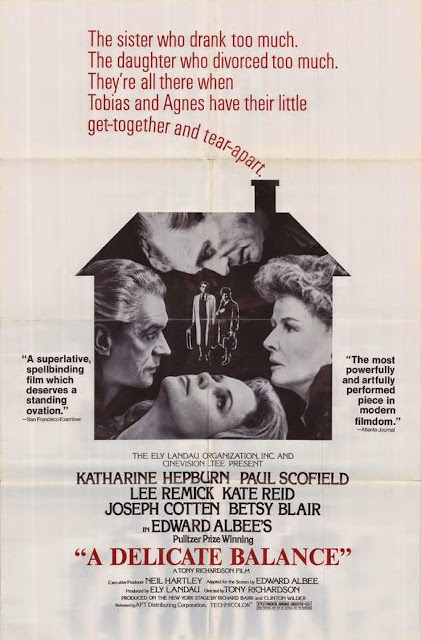Blending comedy, disco
music, sex, and vampirism with some of the worst acting ever captured on film, Nocturna: Granddaughter of Dracula is
entertainingly abysmal. Not a single frame of the movie works as intended, and
that’s what makes watching Nocturna
so perversely pleasurable. Cowritten and coproduced by Vietnamese belly-dancing
star (!) Nai Bonet, who plays the leading role and spends a fair amount of
screen time slathering her own nude body with bath oil, Nocturna is a vanity project gone terribly, terribly wrong.
Sharing
many elements with the George Hamilton comedy Love at First Bite (1979), which was filmed around the same time as
Nocturna, this movie opens in
Transylvania, where Dracula (John Carradine) encounters difficulty adjusting to
disco-era society. Things have gotten so bad that parts of his castle have been
opened to the public as a resort called Hotel Transylvania, which, naturally,
includes a disco. Yet instead of following the famous bloodsucker’s adventures,
as happens in Love at First Bite,
this movie tracks the count’s lissome granddaughter, Nocturna (Bonet).
While
dancing in the disco with an American stud named Jimmy (Antony Hamilton),
Nocturna discovers that she casts a reflection—quite a surprise for a vampire.
Realizing that she becomes mortal on the dancefloor, Nocturna follows Jimmy to
New York City, where she looks for a way to live as a human permanently. A
peeved Dracula soon follows her, hoping to lure Nocturna back to the homeland.
Nocturna is filled with cringe-inducing
one-liners and puns, to say nothing of stupid scatological references. As
Dracula muses at one point: “If I’m alive, why am I here, but if I’m dead, why
do I have to wee-wee?” (Elsewhere, Dracula proclaims, “All the ladies would say
I was hung like a walrus!”) Bonet is a spectacularly bad actress, smiling
lifelessly through every scene as if she’s a Price Is Right model presenting a washer-dryer set, and her line
deliveries are so empty that they’re unintentionally hilarious. Describing an
ecstatic moment, she says “It loved it—it was fantastic” with all the energy of
a postal worker explaining how much it will cost to mail an envelope.
Similarly, Bonet’s dancing is dull and unimaginative, which becomes a
considerable problem whenever the movie stops cold to watch her twirl
repetitively across a dancefloor. Even the aforementioned nude scene has a
strange quality, because it seems powered by exhibitionism rather than
exploitation. Clearly, Bonet wanted the world’s attention just as badly as the
world wanted to ignore her. Still, she did this to herself, so adventurous
viewers can hate-watch Nocturna free
of guilt.
Plus, every so often, the germ of a real idea pokes through the smog
of ineptitude. For instance, Nocturna hooks up with a gang of NYC vampires who
bitch about modern problems, such as the trouble of finding victims whose blood
isn’t tainted by processed food. This particular angle leads to a campy scene
of a black vampire, dressed like a pimp, offering powdered blood—which prompts
an affronted woman to say, “I’d rather suck than sniff any day.” Wow. To
complete the effect, throw in a slumming Yvonne De Carlo, as Dracula’s old
flame, a pulsing disco soundtrack featuring tunes by artists including Gloria
Gaynor and Vickie Sue Robinson, and a supporting actor who does a solid Boris
Karloff impersonation. Can a movie be amazing and atrocious at the same time?
If the movie’s title is Nocturna:
Granddaughter of Dracula, the answer is yes.
Nocturna: Granddaughter of Dracula: LAME















